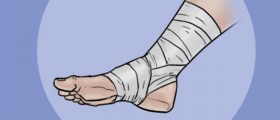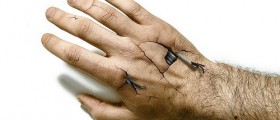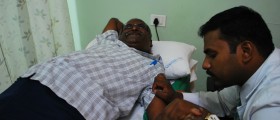
Many people who are serious about weight training often complain about sharp pains that they experience in the biceps, which are the arm muscles that are located between the shoulders and elbows.
Sometimes, it does not even have to be heavy lifting that is causing the pain. Sports that require intense use of the arms, such as tennis and golf, can also lead to similar problems.
The most common reason for bicep pain is the repetitive motion of the muscle that occurs while practicing a certain exercise. The damage that occurs is usually a rip or tear in the muscle. Minor strains can take several days to heal up, but more extensive injuries will call for a more serious treatment of the problem.
A pulled bicep occurs when the muscle is over strained. In this condition, the fibers and tissues that form the muscle are torn.
Another cause of pain could be bicep tendonitis. This is an inflammation of the tendons that connect the muscles of the bicep to the bones.
If a tendon is torn, the pain will most likely be located closer to the elbow than the shoulder.
Swelling is also visible near the elbow in such cases.
There are several ways to treat these pains, and the treatments all depend on the severity of the problem.
Rest is absolutely necessary for any injury to the bicep.
Ice packs should also be applied to the muscle in order to reduce pain and swelling. Usually, ice packs should be held on the muscle for 10 to 15 minutes. Ice pack therapy will also improve the mobility of injured biceps.
Medication can also be used if the injury is a little more serious and painful. Non-steroidal anti-inflammatory drugs (NSAIDs), such as Aspirin, ibuprofen and naproxen are useful. Corticosteroid injections can also be given to soothe the pain.
In more serious cases, surgery could be necessary. Surgery is needed in the case of complete tears of the tendons or bicep muscles. This is only an option when no other non-surgical method will be able to repair the problem. The procedure involves a rejoining of the torn tendon or muscle to the shoulder bone. In some cases, metal implants will be use to secure the tendon into place.
After recovery, there are exercises that can be done to help restore flexibility to the muscles. These include light bicep curls, rotator cable lifts and stretching exercises. If the pain does not subside, then a doctor should be called to have a look at the problems before they escalate.

















Your thoughts on this
Loading...